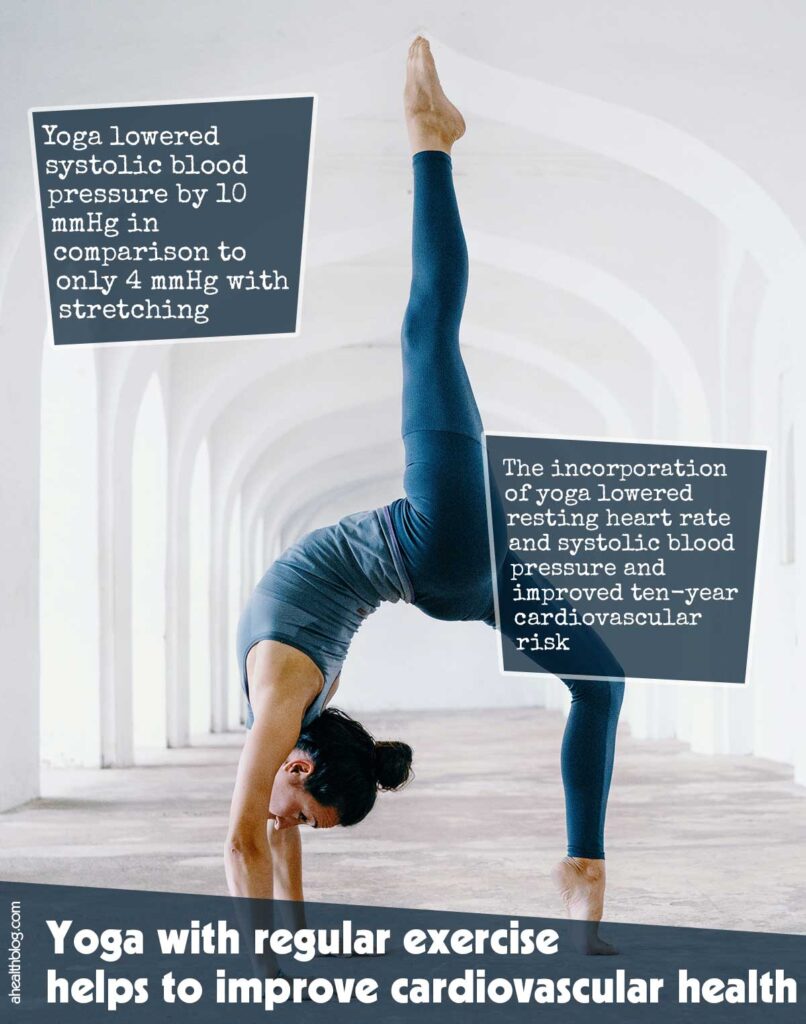A three-month preliminary study on individuals with high blood pressure demonstrated that including yoga as part of an exercise training routine for cardiovascular health and well-being outshone traditional stretching exercises in terms of heart rate regulation, resting heart rate reduction, systolic blood pressure decrease and improved 10-year cardiovascular risk reduction.
Yoga is an engaging lifestyle activity that can dramatically improve cardiovascular health and well-being. While stretching may provide some similarities, the physical aspects of yoga offer unique challenges and differences that cannot be replicated elsewhere.
This preliminary research project sought to determine whether adding yoga into a regular fitness regime reduces cardiovascular risk. While previous studies have demonstrated similar cardiovascular benefits from both types of practice (yoga vs exercise), there can be significant variance in terms of types, frequency, components, duration session length and intensity between them.
Researchers wanted to use an objective scientific method in order to ascertain which cardiovascular risk factors yoga can help individuals reduce, as well as ways it could be implemented into healthcare environments such as primary prevention programs.
Researchers recruited 60 individuals with previously diagnosed hypertension and metabolic syndrome for an exercise training program over three months. Participants were divided into two groups throughout this treatment regime and performed 15 minutes of stretching or structured yoga followed by 30 minutes of aerobic exercise five times weekly.
High-sensitivity C-reactive protein levels, anthropometry measurements, blood pressure readings, lipid and glucose levels as well as Reynolds and Framingham Risk Score measurements were taken at baseline for all groups and there were no differences at all in gender, age, BMI smoking rates resting heart rate and pulse pressure measurements or diastolic and systolic blood pressure readings at this point in time between groups.
After three months, both groups saw significant decreases in resting diastolic and systolic blood pressure levels, average heart rate, arterial blood pressure levels, yoga was found to reduce these by 10 mmHg compared to just 4 with stretching; Yoga also significantly lowered resting heart rate as well as Reynold’s Risk score scores assessing 10-year cardiovascular risks.
Though yoga has been shown to benefit those with high blood pressure, its exact mechanism remains unknown. A preliminary randomized study demonstrated that its benefits cannot solely come from stretching exercises alone.
This study provides evidence for one additional non-pharmacologic option for reducing cardiovascular risk and improving blood pressure control among those living with hypertension within an exercise-based primary prevention exercise program.
Studies show that exercise and stress relief, in any form they feel is most suitable, are key elements for managing high blood pressure and cardiovascular disease. A structured yoga practice may be an especially useful complement to aerobic exercise than just muscle stretching alone.

